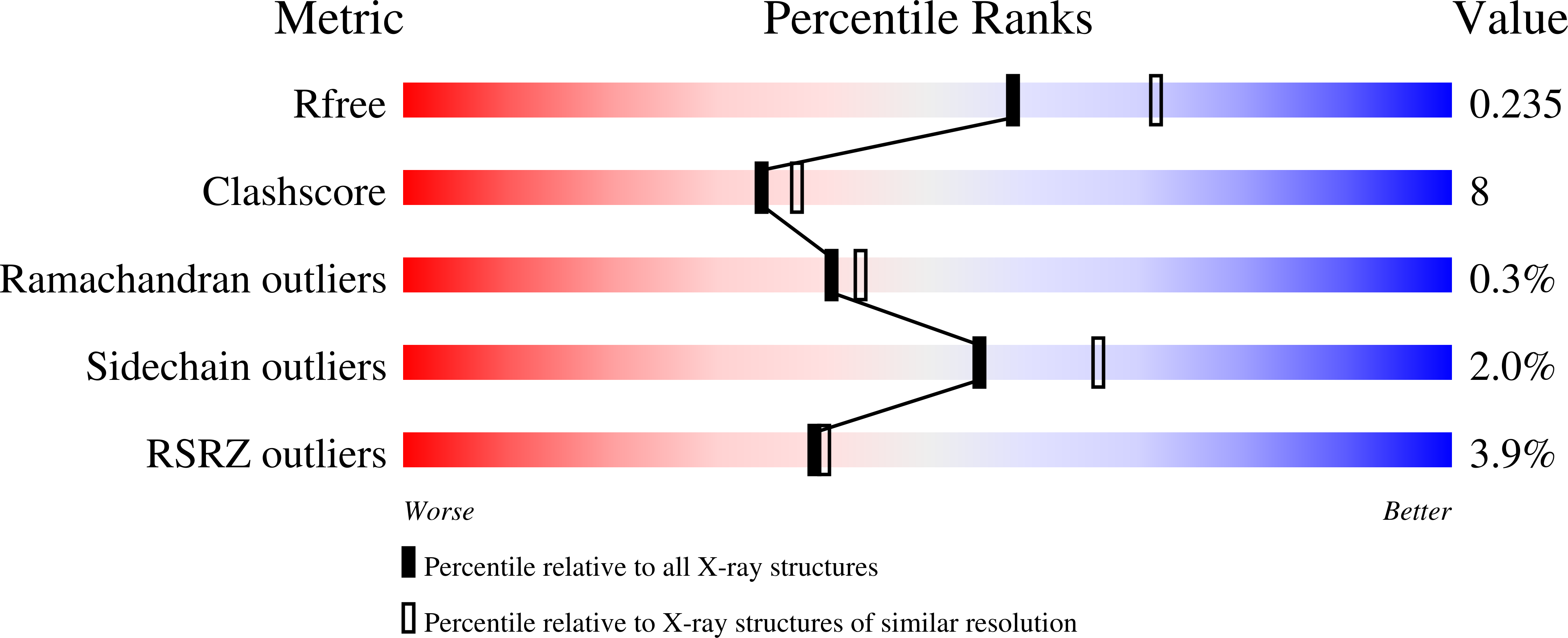Probing the basis of domain-dependent inhibition using novel ketone inhibitors of Angiotensin-converting enzyme
Watermeyer, J.M., Kroger, W.L., O'Neill, H.G., Sewell, B.T., Sturrock, E.D.(2008) Biochemistry 47: 5942-5950
- PubMed: 18457420
- DOI: https://doi.org/10.1021/bi8002605
- Primary Citation of Related Structures:
3BKK, 3BKL - PubMed Abstract:
Human angiotensin-converting enzyme (ACE) has two homologous domains, the N and C domains, with differing substrate preferences. X-ray crystal structures of the C and N domains complexed with various inhibitors have allowed identification of active site residues that might be important for the molecular basis of this selectivity. However, it is unclear to what extent the different residues contribute to substrate domain selectivity. Here, cocrystal structures of human testis ACE, equivalent to the C domain, have been determined with two novel C domain-selective ketomethylene inhibitors, (5 S)-5-[( N-benzoyl)amino]-4-oxo-6-phenylhexanoyl- l-tryptophan (kAW) and (5 S)-5-[( N-benzoyl)amino]-4-oxo-6-phenylhexanoyl- l-phenylalanine (kAF). The ketone groups of both inhibitors bind to the zinc ion as a hydrated geminal diolate, demonstrating the ability of the active site to catalyze the formation of the transition state. Moreover, active site residues involved in inhibitor binding have been mutated to their N domain counterparts, and the effect of the mutations on inhibitor binding has been determined. The C domain selectivity of these inhibitors was found to result from interactions between bulky hydrophobic side chain moieties and C domain-specific residues F391, V518, E376, and V380 (numbering of testis ACE). Mutation of these residues decreased the affinity for the inhibitors 4-20-fold. T282, V379, E403, D453, and S516 did not contribute individually to C domain-selective inhibitor binding. Further domain-selective inhibitor design should focus on increasing both the affinity and selectivity of the side chain moieties.
Organizational Affiliation:
Division of Medical Biochemistry, Institute of Infectious Disease and Molecular Medicine, University of Cape Town, Observatory 7925, South Africa.



















